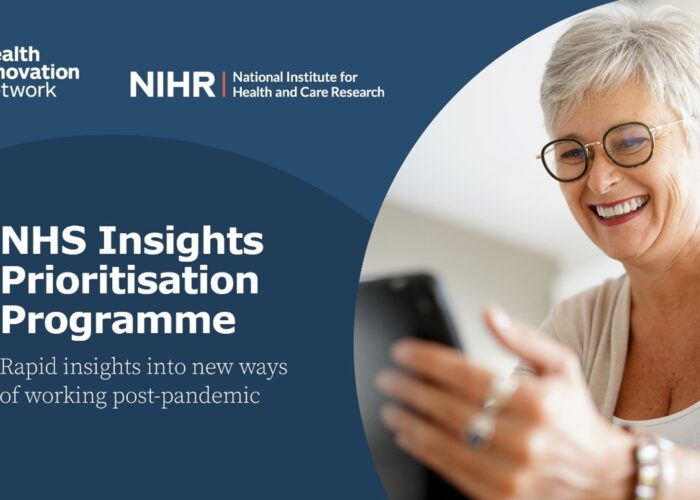In 1997, monetary policy in this country was transformed overnight. On May 6, the then chancellor of the exchequer, Gordon Brown, gave the Bank of England operational independence. This remains one of the most important and universally welcomed policy decisions of the 1990s. The NHS needs a similar watershed moment if it wants to weather the challenges ahead.
In essence, operational independence means transferring the power to set monetary policy from the Chancellor of the Exchequer to the Governor of the Bank of England. The Chancellor is prepared to trade this policy lever in exchange for more effective monetary policy.
To understand why, one needs to appreciate two basic relationships in economics: first, lower inflation is associated with higher economic growth; and second, surprise inflation can reduce unemployment. In the absence of central bank independence, the optimal strategy for the Chancellor is to announce that inflation will be kept low, but once people and businesses have made their decisions based on the expectation of low inflation, he is better off by unexpectedly increasing price levels to reduce unemployment. In other words, the optimal policy changes over time, undermining credibility.
This phenomenon is what economists and sociologists have labelled the time-inconsistency problem. The concept has its formal origins in Kaydland and Prescott’s seminal work in the late 1970s which won them the Nobel Price. Time-inconsistency is by no means confined to monetary policy and there are numerous examples in the historical literature including most famously that of Odysseus and the Sirens. Professor Greg Mankiw of Harvard University has an excellent blog, which sets out the basic principles in more detail and provides compelling examples.
Today, there is strong theoretical and empirical evidence that central bank independence works to avoid the time-inconsistency problem making it highly unlikely and economically undesirable to reverse this policy.
The tale of independence contains important lessons for the NHS and in particular attempts to reconfigure services.
There are very few examples of public policy that raise more anxiety among the public than the looming closure of local hospitals or A&E departments. High profile cases such as the recent proposed closure of Lewisham A&E in South London have highlighted the complexity of the issue and strength of local sentiment.
Hospital reconfigurations are excellent examples of the time-inconsistency problem. To see why, consider the following familiar scenario.
Suppose there is evidence that service changes will deliver quality improvements and reduce costs and that the Secretary of State for Health supports the case for change. Unfortunately, this view is not shared by the local population who instinctively distrust the evidence and motivations. As a consequence, local MPs come under pressure and may find themselves going against party lines in an attempt to maintain their seats. The closer election day, the less optimal it becomes for the Secretary of State to continue to support change.
The trade-off between the need to improve health services and minimise the political fallout is one that is won or lost on the trust in the quality of evidence that underpins the case for change. This is where the problem lies. Even when the evidence strongly supports reconfiguration, public confidence is low and Ministers cannot trust themselves to implement the changes, unless they can be implemented very early on in the electoral cycle.
Public scepticism is understandable to a degree. In most cases reconfigurations are commissioned locally by NHS bodies such as commissioning groups. Almost always the assumption is that change is necessary. But few local commissioners have the required capability or capacity to assemble the business case, since these are extremely complex matters. Farming out the task to management consultancies is a frequent occurrence. But neither commissioners nor consultancies have direct local accountability. It is therefore too easy for those opposing change to construct a narrative of vested interests, which undermines the credibility of the evidence. Recent cases show that those concerns, while often emotional, have sometimes been legitimate.
As a consequence, change in the NHS has been painfully slow and costly.
The policy response so far has broadly been twofold.
Evidence is scrutinised by a third party. This option has been tried and tested and should be put to rest. The Independent Reconfiguration Panel (IRP) was established in 2003 to provide advice to the Secretary of State for Health on contested proposals for service change. There are three main shortcomings which make it unfit for the future. First, few know it exists and what its role actually is. Second, those who recognise the IRP have questioned its independence given that it is sponsored by the Department for Health and merely advises the Secretary of State, who reserves his right to make the final decision. Finally and most importantly, it only gets involved as a last resort where evidence and recommendations are strongly disputed.
An alternative approach is to ignore public opinion to accelerate change. This is what clause 119 in the Care Bill, which came into effect in March this year, effectively does. It provides the power to close or downgrade a hospital or A&E with only 40 days’ notice making proper consultation difficult if not impossible.
Strong opposition has been expressed on the grounds that this undermines democracy. This challenge deserves an answer. However, 119 is mortally flawed not because of its democratic deficit but precisely because it reinforces the time-inconsistency problem. It implicitly assumes that politicians have superior information but more importantly that they will act upon this information impartially and consistently over time. The weight of behavioural science says they won’t.
Instead, the Secretary of State for Health just like the Chancellor, belong firmly tied to the mast with their ears plugged. There are broadly two options, a radical and an incremental one.
A permanent, fully independent, and expert body responsible for assembling the business case for change and derive binding recommendations would improve the quality of evidence, increase public trust, and bind ministers into decisions. Such body would be accountable to Parliament and operate with a similar independence to NICE. It would have a cross-party elected Chair and be at least partly funded by the significant resources currently spent locally to acquire external resources. Finally, and in contrast to the IRP it would actively co-develop options with local partners from the start, building on national and international best practice.
If a permanent infrastructure is too costly given the ad hoc nature of service changes (though the next decade will see many more), one might want to emulate elements of the US Base Realignment and Closure Commission (BRAC). Anyone who has ever witnessed the process of closing military facilities knows how strong local resistance can be, not dissimilar to service change in health care. The BRAC has the unenviable task to make the case for the closure of military facilities to Congress. It is not a permanent Commission but assembled according to need and has been set up five times since the end of the Cold War and facilitated the reconfiguration of more than 300 facilities. There is growing evidence of its resilience to political pressures.
Such a body would have a higher degree of independence than the current IRP but should move beyond merely scrutinising evidence as the BRAC does to actually developing the business case from the start.
Last but certainly not least, the Bank of England does not consult on its policy changes; an NHS reconfiguration body would absolutely have to work with effected communities were it to stand any chance of gaining the trust the BoE has seen.
We are about to enter party manifesto season and there is a real opportunity for a Bank of England moment. The NHS certainly needs one.
The blog was also published in the HSJ on 28 May 2014.



